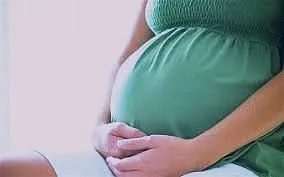Child and maternal malnutrition are turning out to be the major health concerns in Kashmir. Most people, especially women folk in Kashmir, ignore the symptoms of malnutrition, such as the lethargy and depression caused by iron deficiency. Such symptoms are dismissed as “normal” or not so important which further worsen the problems.
Child and maternal malnutrition across the country and its states and Union territories is not a new health concern. Earlier in 1990’s malnutrition caused 30.6 per cent death and disability among women in Jammu and Kashmir. While in 2016 it caused 10.9 per cent death and disability in J&K. However, it continues to be a major concern in 2022.
Malnutrition is basically an ill health caused by deficiencies of calories, protein, vitamins, and minerals interacting with infections and other poor health and social conditions that decline the strength and well-being of millions of women and adolescent girls.
According to the doctors, the nutrition of any human being starts from the womb of a mother. Maternal malnutrition is a big health concern. It is not only prevalent in Jammu and Kashmir but all over the country.
A mother’s diet directly affects the health of a child. Maternal malnutrition is responsible for the low birth weight. Then, those children grow undernourished and they develop weak immune systems. Nutritional parameters determine the health of a human being. If children are born weak. They stay weak throughout their life, so it is important for women folk to eat healthy and nutritional food.
As per the reports, over 15 lakh children below the age of five are suffering from acute malnutrition-related ailments including stunted growth in Jammu and Kashmir.
Besides, J&K has 2,51,393 stunted children (below five years).
Before pregnancy, women need nutritious and safe diets to establish sufficient reserves for pregnancy. During pregnancy and breastfeeding, energy and nutrient needs increase. Meeting them is critical for women’s health and that of their child in the womb and throughout early childhood.
Not in Jammu and Kashmir only, but in many parts of the world especially in India, the nutritional status of women is unacceptably poor. Many women and adolescent girls are nutritionally at-risk and are not receiving the nutrition services they need to be healthy and give their babies the best chance to survive, grow and develop.
Recently, the level of hunger in India has been labelled “serious”. With a score of 29.1, the country ranked 101 out of 116 countries last year.
The Global Hunger Index (GHI) is a tool for comprehensively measuring and tracking hunger at global, regional, and national levels. With a score of 29.1, the level of hunger in India has been labelled “serious”.
India’s ranking in the index has slid in the past two years. In 2020, India was ranked 94 out of 107 countries and 101 out of 116 countries in 2021.
The report is prepared jointly by Irish aid agency Concern Worldwide and German organisation Welt Hunger Hilfe.
In Asia, Afghanistan with a rank of 109 is the only country behind India.
All of India’s neighbouring countries fared better. Pakistan ranked 99, while Bangladesh was ranked 84, Nepal 81 and Sri Lanka 64.
South Asia, the region with the world’s highest hunger level, has the highest child stunting rate and by far the highest child wasting rate in the world, the report said.
Stunting is when a child has a low height for their age, usually due to malnutrition while a child is defined as ‘wasted’ if their weight is too low for their height. Wasting is also referred to as acute malnutrition.
“India’s child wasting rate, at 19.3%, is the highest of any country in the world and drives up the region’s average owing to India’s large population,” it said.
DISCLAIMER: The views and opinions expressed in this article are the personal opinions of the author. The facts, analysis, assumptions and perspective appearing in the article do not reflect the views of GK.






